California can take kids from abused moms. Why the separation can harm both
The story was originally published by the CalMatters with support from our 2023 Domestic Violence Impact Fund.
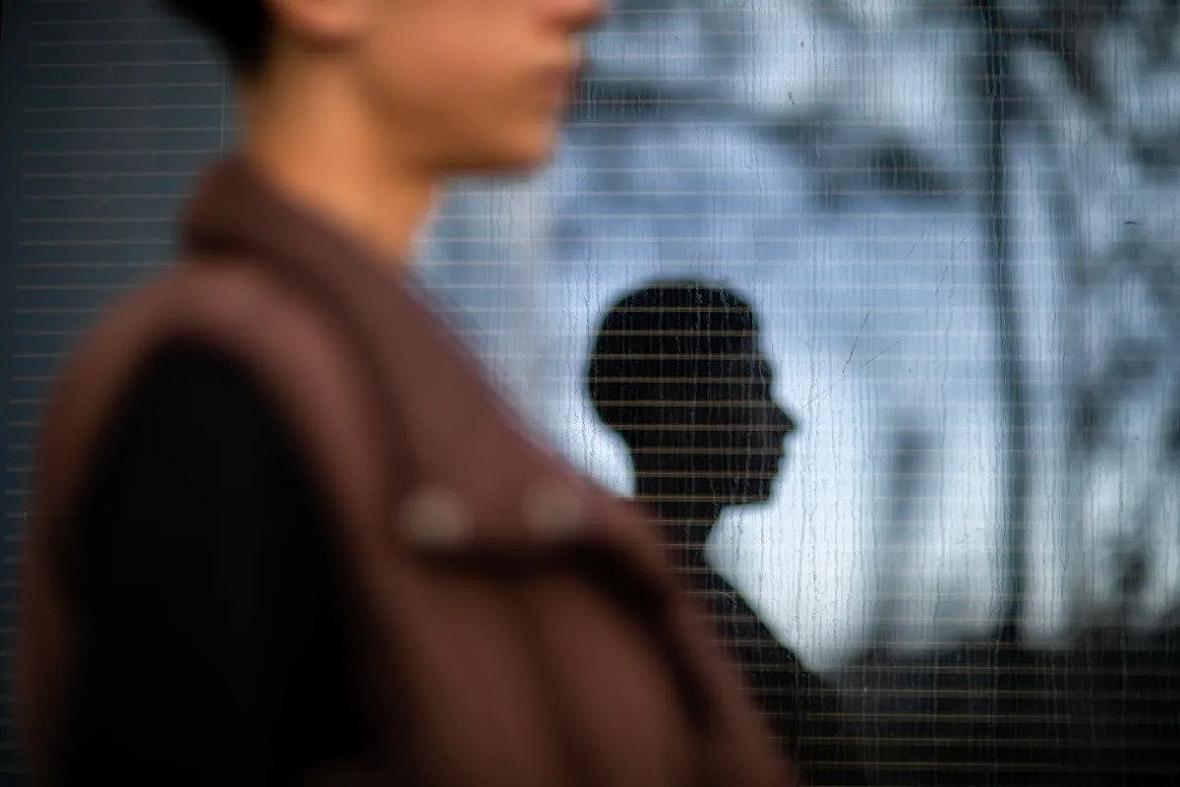
Jackie’s oldest son, Raphael, in Monterey Park on Sept. 29, 2023. Raphael saw and experienced the domestic violence in his mother’s relationship when he was a young teenager. Raphael is now in college and plans to work towards being a Dermatologist. His mother, Jackie, is a family advocate for Los Angeles Defense Lawyers, helping families navigate the system.
Photo by Alisha Jucevic for CalMatters
Worried that her abusive partner would kill her or her boys, Jackie had nowhere to go and no one to ask for help. She said her partner had angry outbursts, beat her, degraded her and destroyed things in the house. She knew she had to escape.
She called the Los Angeles County Department of Children and Family Services, hoping for a path to a safe place to stay. Instead, she received a warning that struck a different kind of fear in her.
If she didn’t leave her partner within 30 days, the child welfare agency would take her four boys.
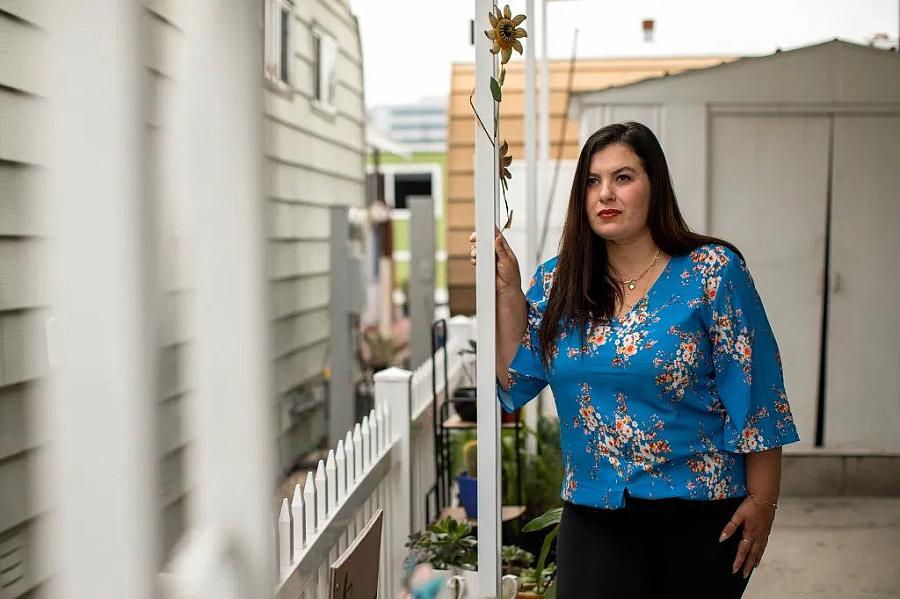
Marie at her home in Culver City on Sept. 29, 2023. Marie lived at Community’s Child after leaving a domestic violence relationship and battling past addictions. She now owns her home and has built a new life for herself and her children.
Photos by Alisha Jucevic for CalMatters
“When I asked for help, they wanted to separate us,” said Jackie, 39, who asked not to use her full name to protect her children’s privacy.
The agency’s warning is rooted in a nearly 40-year-old California law that allows child welfare agencies to remove children when they believe an abused parent cannot ensure their kids’ safety. Called “failure to protect,” the law is intended to safeguard kids in dangerous situations.
But the longstanding practice is facing continued scrutiny as domestic violence advocates raise concerns about the potential to further traumatize families. Meanwhile, other states with similar laws have narrowed the criteria for when a welfare agency can remove a child. Many states have “failure to protect” laws, but California’s is comparably vague, giving social workers wide latitude in deciding when to remove kids.
“I just don’t understand how ‘failure to protect’ exists, either as a fair thing or a legal principle,” said Eve Sheedy, a lawyer and expert in domestic violence policy, including as former director of LA County Domestic Violence Council.
The law puts child welfare workers in the unenviable position of deciding what is more harmful for children — the trauma of being separated from their family or the risks of witnessing more violence or even becoming a target.
And it can leave domestic violence victims feeling as if they are being punished for their partners’ abuse.
“Right now the victims are seen just like a perpetrator,” said Marie, 36, a domestic violence survivor who said the Los Angeles child welfare agency took her children from her after she was abused by her partner. The kids continue to live with their grandparents. Marie also spoke on the condition that her full name would not be published to protect the privacy of her kids.
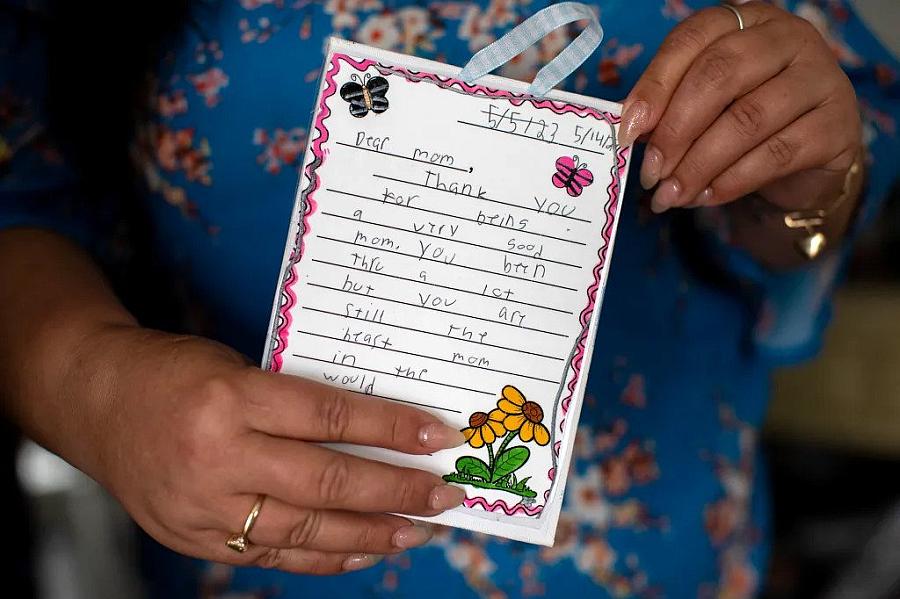
Marie holds a card from one of her kids at her home in Culver City. The card reads, “Thank you for being a very good mom. You been thru [sic] a lot but you are still the beast [sic] mom in the world.”
Photos by Alisha Jucevic for CalMatters
Changing the law is difficult in part because lawmakers and social workers share a commitment to protecting children, and they worry about a shift that could endanger kids.
CalMatters spoke with four mothers who lost children because of a failure to protect order, five current and former social workers, eight domestic violence policy experts and advocates and two state lawmakers for this story.
All of them stressed that protecting children was their highest priority. Several cited two notorious murders in Los Angeles County where the welfare agency failed to remove children to underscore the hazards of allowing kids to remain in violent households. One was Gabriel Fernandez, who suffered years of gruesome torture and abuse before he was fatally beaten at age 8 in 2013 by his mother and her boyfriend. The other was Anthony Avalos, who was also tortured and abused by his mother and her boyfriend before his death at age 10 in 2018.
“In my opinion, the system really did fail those kids,” said Assemblyman Tom Lackey, a Palmdale Republican who has been a teacher and a California Highway Patrol officer.
He said he has dealt more with children who should’ve been removed from unsafe situations than with unnecessary separations from abused parents for “failure to protect.” .
No one can say how many California children are separated from family members every year under the law because neither the state nor counties collect that information. The closest estimate comes from a recent report by the UCLA Pritzker Center that showed more than half of Los Angeles County’s 38,618 foster care cases in 2020 involved domestic violence.
Jackie, the mother who was alarmed when she received a “failure to protect” warning six years ago, believes the law discourages women from reporting domestic violence.
“A lot of women don’t say anything because of fear of being separated from their kids,” she said.
Separation after abuse, drug use
Marie is soft-spoken with sparkling eyes and a gentle manner. She said as a teenager she got hooked on prescription opioids and was addicted for years. She stopped using in 2015, and within a little more than a year she graduated from college, got married and had two babies.
“It was all too much, and I started using again,” Marie said.
Marie said her ex-husband was also addicted to drugs and when he was using, he physically abused her.
The Department of Children and Family Services removed Marie’s kids for failure to protect due to domestic violence and substance abuse. At ages 1 and 2, the kids had about a one-week stay in a group home. The children were adopted by Marie’s parents within six months of opening her case. Adoption typically takes a year or more.
She pulled herself out of addiction after she became pregnant again and didn’t want to lose custody of a third child. She entered a substance abuse program in 2017. Next, she and her 2-month-old infant entered Community’s Child, a shelter and development program for homeless single mothers “motivated to achieve self-sufficiency.” Marie now owns her own home and works full-time in the medical field.
She and her ex-husband have made peace and co-parent all three children, though the two older kids still live with Marie’s parents. Marie said the kids were very young during the violence and don’t remember it, but she is still traumatized by the separation.
“I wasn’t able to heal in the six months that they gave me,” Marie said. “My family would’ve been a lot different if we had more time.”
Marie’s circumstances are not unusual. One-quarter to one-half of domestic violence cases occur with other problems, such as parental substance abuse or mental illness, intergenerational trauma or unemployment, among other stressors.
Her story illustrates the difficult choices social workers face every day.
Risk of staying and the risk of removal
The Los Angeles Department of Children and Family Services is the largest child welfare agency in the world, with a budget of nearly $2.8 billion and oversight of more than 25,000 children annually. In 2022, 90% of the kids were 18 and younger and more than two-thirds were Black or Hispanic.
If a social worker makes the wrong call children can pay the price with their health or their lives.
Two former child welfare social workers said they felt supported by their agency, but deciding when a child was at risk of harm felt like their responsibility, which was difficult and emotionally exhausting.
“Child welfare is a judgment-based system. It is human-driven and based upon sticky, personal family dynamic facts,” said Brandon Nichols, director of the Department of Children and Family Services, Los Angeles County’s child protection agency..
In U.S. households with domestic violence, 30 percent to 60 percent also have child maltreatment, including physical abuse or neglect. In 2020, 1,750 children died from abuse or neglect in the United States.
Dr. Kelly Callahan, director of the Kids In the Dependency System clinic at Harbor-UCLA Medical Center, said children who witness domestic violence often have psychological or emotional problems.
“Children who have witnessed violence between their caretakers can have PTSD (Post-Traumatic Stress Disorder), nightmares, sleep problems, school difficulties and more. They react the same way as children who have been abused,” said Callahan.
Because of such harm, proponents of “failure to protect” laws say they’re needed for children’s safety.
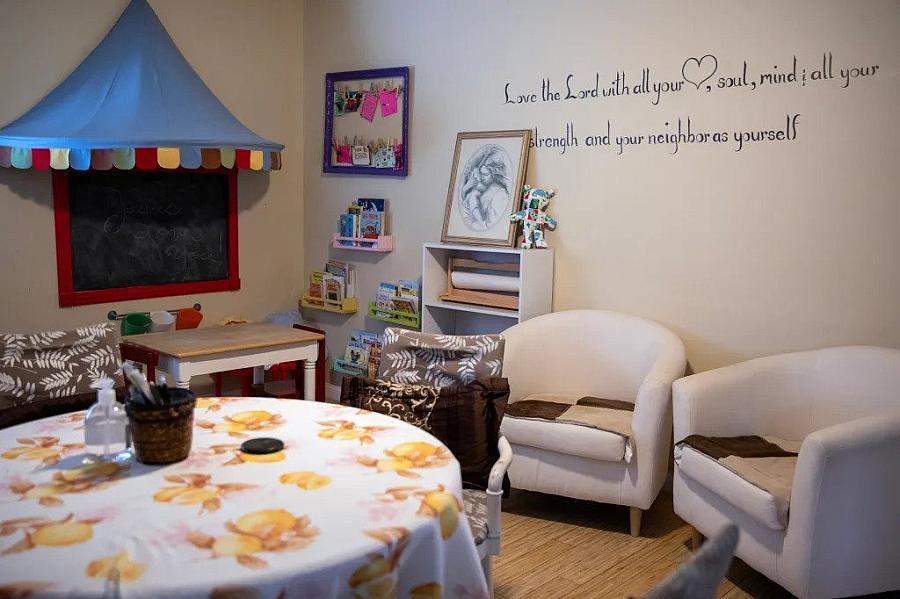
The library and counseling room at Community’s Child in Lomita on Sept. 29, 2023. Community’s Child is a shelter and resource program that provides supplies, food and housing for women and infants who are struggling with homelessness, addiction and poverty.
Photo by Alisha Jucevic for CalMatters
But separation from a parent can be equally devastating for children. Adverse childhood experiences, such as abuse or witnessing violence, contribute to poor mental and physical health well into adulthood, including risk for early death. A safe, secure relationship with a caring adult, such as the non-offending parent, can build resiliency for a traumatized child.
“The courts will often say, ‘We know that being exposed to violence in the home alters a child’s brain chemistry and we’re going to remove this child and place them in foster care,” said Emily Berger, a lawyer for Los Angeles Dependency Lawyers, a nonprofit consortium of court-appointed lawyers who defend parents involved in dependency court.
“But what we’ve found, and science backs up, is that being removed from your community, your family of origin and your primary caregiver has such a tremendous impact upon a child’s healthy brain development and ability to form attachments,” she said.
Evolution of ‘failure to protect’
The original “failure-to-protect” laws emerged in the 1960s in response to reports of child physical abuse. Under the laws, if a caregiver knew a child was being abused and didn’t report it, that caregiver could be prosecuted the same as the abuser.
California’s failure to protect law falls under a welfare code that states children can become dependents of the court if “the child has suffered or there is a substantial risk that the child will suffer, serious physical harm inflicted non-accidentally upon the child by the child’s parent or guardian.”
Listed among the criteria for substantial risk is “the failure or inability of the child’s parent or guardian to adequately supervise or protect the child.”
Neglect is the leading cause for children to be placed under the courts’ jurisdiction. Failure to protect is often considered as neglect or emotional abuse in the child welfare and justice systems, including when it’s related to domestic violence.
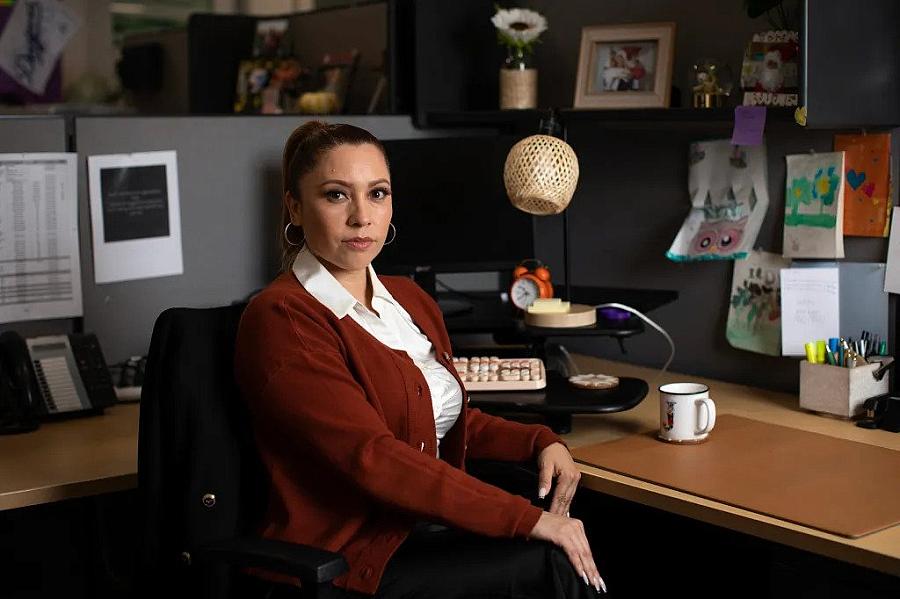
Jackie at her office in Monterey Park on Sept. 29, 2023. Jackie is a domestic violence survivor and is now a family advocate for Los Angeles Defense Lawyers.
Photo by Alisha Jucevic for CalMatters
As of 2015, 48 states and four U.S. territories had “failure to protect” laws: Maryland, Wyoming and Puerto Rico did not. The statutes designate the crimes as misdemeanors, or felonies. In California, neglect is usually charged as a misdemeanor.
Failure to protect charges can lead to life sentences for parents in six states — Oklahoma, Missouri, Nebraska, Nevada, South Carolina and West Virginia. In Texas, the maximum penalty is 99 years. For some non-offending parents, the penalties have been more severe than for the abuser.
Some states, such as New York and Washington, have moved in the opposite direction to protect the rights of abuse victims. The New York Court of Appeals in 2004 ruled that witnessing domestic violence did not constitute neglect and couldn’t be the sole basis for removing children from the non-offending parent.
State Sen. Susan Rubio, a Democrat from West Covina, two years ago carried a bill that would have compelled California to study domestic violence in the child welfare system. She told her colleagues at the time the law “fails to recognize” the trauma of a parent “who is a domestic violence survivor.” The bill did not reach Gov. Gavin Newsom.
Would changing domestic violence law matter?
Despite Rubio’s setback, some advocates for domestic violence victims outside of the Capitol are building a case to change California’s law.
The Pritzker Center report calls for California to consider legislative reforms similar to the ruling from the New York Court of Appeals. The report also calls for better training in the complexities of family violence for all child welfare workers, court officers and such mandated reporters as teachers and coaches.
“I think we could have legislation that said being victimized by domestic violence is not sufficient basis for charging neglect,” said Sheedy, the former director of LA County Domestic Violence Council.
This would be similar to California laws prohibiting the use of poverty or homelessness as the sole basis for removal of a child.
But others are urging more modest changes even as they express misgivings with the current policy. They worry about rescinding a policy intended to protect a child.
“There are definite concerns with ‘failure to protect’ and how it’s being used — it’s being used as a stick,” said Julie McCormick, a lawyer with the Children’s Law Center, a nonprofit legal organization that represents children in the dependency system.
But, she said, “I wouldn’t say CLC (Children’s Law Center) has the stance that it should be gone. It’s too nuanced to do something blanket. I think that’s why it’s so hard to come up with legislation.”
The California Partnership to End Domestic Violence also has looked at the failure to protect law. It isn’t calling for significant changes.
“It’s an issue we’ve tried to look at a couple of ways, but what makes sense statewide is tricky,” said Krista Colon, the partnership’s director.
Ending generations of domestic violence
Jackie, the mother of four boys who was frightened by the warning that she could lose her kids, became an advocate for domestic violence victims after her experience. She is now a parent-partner with the Los Angeles Defense Lawyers and helps other parents navigate the system.
Her sons are now 18, 13, 12 and 7. She is stylish and engaging with a ready smile, but she harbors deep trauma. She lived with an abusive partner, the father of her three younger boys, for 10 years.
“At first he was the perfect guy,” said Jackie, “Then I moved in with him and little things started happening, like yelling and pushing me.”
She grew up with domestic violence in a large, multi-generational Latino household. When her ex-partner became abusive, she thought it was normal. Her grandmother told Jackie she had “to stay. Hispanic men are just like that.”
Raphael, Jackie’s oldest son, said he remembers being afraid during the fighting, but as the big brother he had to be strong to protect his siblings.
Jackie called 12 shelters before she found one that would take her and her sons. Most shelters don’t accept boys older than 8. Raphael was 11, so he went to live with his biological father.
“My dad told me my mom and my brothers were in the shelter. I didn’t know what that meant, and it really scared me,” Raphael said, “It was really tough because I missed my brothers.”
Although the boys weren’t taken, child welfare’s threat to do so was devastating.
“It was drastic and traumatizing,” said Jackie.
Yet, she said, calling child welfare saved her life.
“When I was living through it, I thought I was doing what I needed to do to protect my kids,” said Jackie.
Most abused mothers do.
